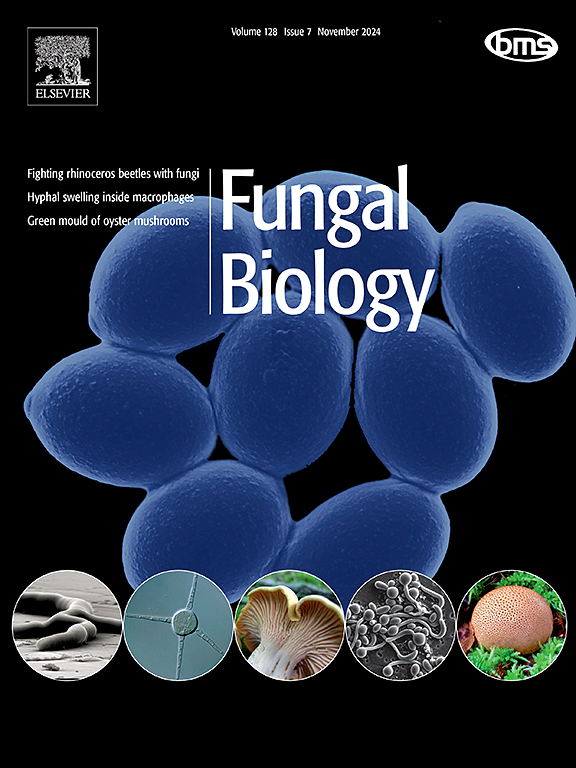Myxomycetes in urban green space in subtropical China: Spatiotemporal patterns override forest type effects
IF 3
3区 生物学
Q2 MYCOLOGY
引用次数: 0
Abstract
Urban green areas are vital yet underexplored reservoirs of microbial diversity in cities. This study examines myxomycete communities in Zijin Mountain National Forest Park, a subtropical urban forest in Nanjing, China, across four seasons and multiple forest types. Combining field collections and moist chamber cultures, we documented 60 species from 906 occurrence records. Seasonal variation dominated community dynamics, with species richness peaking in summer and declining in winter. β-diversity was primarily driven by species turnover (βsim = 0.23–0.28), with nestedness playing a minor role across temporal and spatial scales. Ceratiomyxa fruticulosa emerged as a forest-type indicator for mixed broad-leaved stands, while Arcyria cinerea and Cribraria violacea tracked seasonal humidity changes. Crucially, myxomycete composition showed no statistically significant differentiation among forest types, a departure from natural ecosystems, suggesting that urban management homogenizes habitats critical for microbial niche partitioning. These findings highlight urban parks’ underrecognized role in preserving myxomycete diversity but reveal their vulnerability to microhabitat simplification. We advocate conseration of decaying wood and leaf litter to maintain ecological functions, offering actionable strategies for biodiversity-informed urban planning.
中国亚热带城市绿地中的黏菌:时空格局超越森林类型效应
城市绿地是城市微生物多样性的重要水库,但尚未得到充分开发。本研究对南京紫金山国家森林公园的黏菌群落进行了跨四季、多森林类型的研究。紫金山国家森林公园是南京的亚热带城市森林。结合野外采集和湿室培养,我们从906个发生记录中记录了60个物种。群落动态以季节变化为主,物种丰富度夏季达到高峰,冬季下降。β-多样性主要受物种更替驱动(βsim = 0.23 ~ 0.28),巢性在时空尺度上起次要作用。结果表明,猕猴桃(Ceratiomyxa fruticulosa)是混合阔叶林的林型指标,而木耳(Arcyria cinerea)和堇菜(Cribraria violacea)是季节湿度变化的跟踪指标。关键是,黏菌组成在森林类型之间没有统计学上的显著差异,这与自然生态系统不同,表明城市管理使对微生物生态位分配至关重要的生境均质化。这些发现突出了城市公园在保护黏菌多样性方面的作用,但也揭示了它们对微生境简化的脆弱性。我们提倡保护腐烂的木材和落叶,以维持生态功能,为生物多样性的城市规划提供可操作的策略。
本文章由计算机程序翻译,如有差异,请以英文原文为准。
求助全文
约1分钟内获得全文
求助全文
来源期刊

Fungal biology
MYCOLOGY-
CiteScore
5.80
自引率
4.00%
发文量
80
审稿时长
49 days
期刊介绍:
Fungal Biology publishes original contributions in all fields of basic and applied research involving fungi and fungus-like organisms (including oomycetes and slime moulds). Areas of investigation include biodeterioration, biotechnology, cell and developmental biology, ecology, evolution, genetics, geomycology, medical mycology, mutualistic interactions (including lichens and mycorrhizas), physiology, plant pathology, secondary metabolites, and taxonomy and systematics. Submissions on experimental methods are also welcomed. Priority is given to contributions likely to be of interest to a wide international audience.
 求助内容:
求助内容: 应助结果提醒方式:
应助结果提醒方式:


